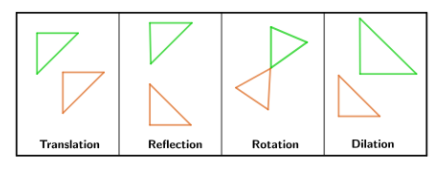When it comes to understanding reflection rules, you’re about to open a door to a world where light behaves like a well-choreographed dance.
Have you ever wondered why mirrors work the way they do or how light bounces off surfaces? Get ready to unravel the secrets behind the mesmerizing play of light rays and the fundamental laws that govern their behavior.
Stay tuned for an enlightening journey that will shed light on the basics of reflection principles and their practical applications in everyday life.
Principles of Light Interaction
When light strikes a surface, it reflects off at an angle equal to the incident angle. This fundamental principle governs how light interacts with objects around you. Understanding this concept is crucial in grasping the behavior of light as it bounces off various surfaces.
Imagine standing in front of a mirror. When light from a source, say a lamp, hits the mirror, it bounces off at the same angle it approached the mirror. This simple rule explains why you can see your reflection in the mirror. The angle at which the light hits the mirror is the same as the angle at which it leaves, allowing the reflected image to reach your eyes.
This principle applies not only to mirrors but to all surfaces that light encounters. Whether it’s a glass window, a still body of water, or a shiny tabletop, the angle of reflection will always equal the angle of incidence. By internalizing this concept, you can better understand how light behaves and interacts with the world around you.
Laws of Reflection
Understanding the laws of reflection is essential for grasping how light behaves when interacting with surfaces. These laws govern how light rays bounce off smooth surfaces like mirrors. The first law states that the incident ray, the reflected ray, and the normal (a line perpendicular to the surface) all lie in the same plane. This means that when light hits a surface, the angle it makes with the normal is equal to the angle at which it reflects off the surface. This principle is known as the law of reflection.
The second law of reflection dictates that the angle of incidence is equal to the angle of reflection. In simpler terms, if light hits a mirror at a 30-degree angle from the normal, it will reflect at a 30-degree angle on the other side of the normal. These two fundamental laws of reflection are crucial in understanding how light interacts with surfaces and how we perceive the world around us.
Understanding Reflected Rays
To further comprehend light behavior on surfaces, delve into the realm of reflected rays. When light strikes a surface, it can either be absorbed, transmitted, or reflected. Reflected rays are crucial in understanding how we perceive the world around us. Imagine standing in front of a mirror – the image you see is a result of light being reflected off the mirror’s surface towards your eyes. This phenomenon occurs due to the angle of incidence being equal to the angle of reflection. In simpler terms, the way light hits a surface determines how it bounces off.
Understanding reflected rays is essential in various fields, from designing optical systems to creating realistic computer graphics. By grasping how light interacts with surfaces, you can manipulate reflections to achieve desired effects. Whether you’re a photographer capturing the perfect shot or an architect designing a building with optimal lighting, knowing how reflected rays behave is fundamental. So, next time you look at your reflection in a window or a puddle, remember that it’s the result of light following the rules of reflection.
Specular Vs. Diffuse Reflection
If you want to distinguish between specular and diffuse reflection, observe how light interacts with different surfaces.
Specular reflection occurs when light hits a smooth and shiny surface, such as a mirror, and reflects off at equal angles. This type of reflection creates clear and defined images, like seeing your own reflection.
On the other hand, diffuse reflection happens when light strikes a rough or uneven surface, causing the light to scatter in different directions. This type of reflection doesn’t produce clear images but instead results in a softer and more dispersed reflection, like when light hits a piece of paper.
Understanding the differences between specular and diffuse reflection is crucial in various applications. For instance, in photography, knowing how light reflects off different surfaces helps photographers manipulate lighting to achieve desired effects. Architects and interior designers also consider these reflections when choosing surface finishes to control the ambiance of a space.
Real-world Applications
In real-world scenarios, practical applications of understanding the differences between specular and diffuse reflection can be observed in various fields. When it comes to designing efficient lighting systems, knowledge of specular reflection is crucial. For instance, in architecture, architects utilize this knowledge to direct light towards specific areas or to minimize glare by controlling the angle of reflection.
Understanding diffuse reflection is equally important, especially in photography. Photographers rely on diffused light to create soft shadows and evenly illuminated subjects, enhancing the overall quality of their images. In the automotive industry, the study of reflection properties helps in designing cars with optimal visibility and aesthetics. By considering how light reflects off different surfaces, manufacturers can improve safety by reducing glare for drivers.
Additionally, in the field of renewable energy, solar panels benefit from understanding reflection to maximize energy absorption. By optimizing the surface to minimize specular reflection, solar panels can efficiently convert sunlight into electricity. These real-world applications highlight the significance of comprehending specular and diffuse reflection in various practical contexts.
Conclusion
Now that you understand the basics of reflection rules, you can apply this knowledge in various real-world scenarios. Remember the principles of light interaction, the laws of reflection, and the differences between specular and diffuse reflection.
By mastering these concepts, you’ll be able to analyze and predict how light behaves when it interacts with different surfaces. Keep practicing and experimenting to further enhance your understanding of reflection rules.



